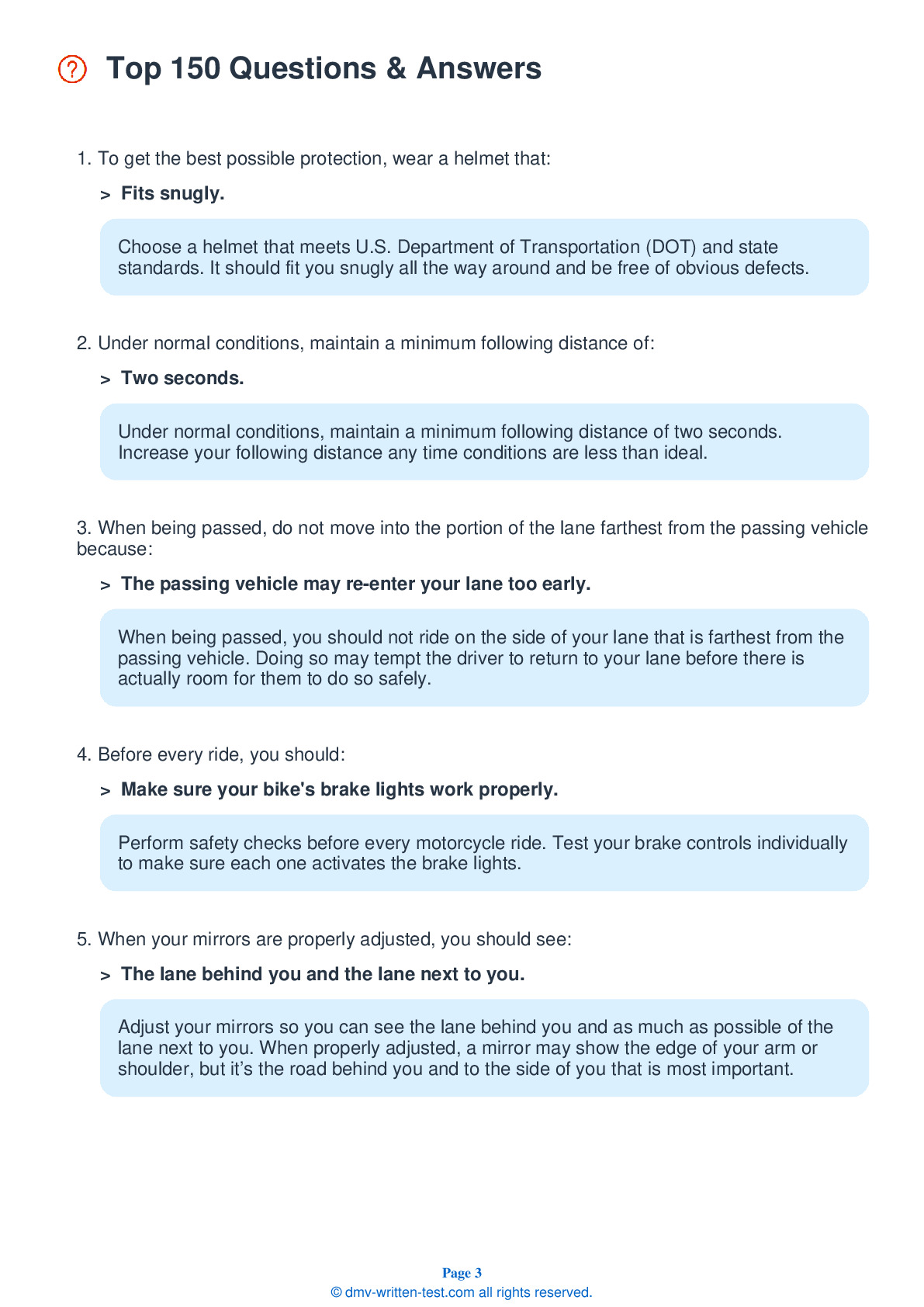2025 District Of Columbia Motorcycle Permit Test 16
The following questions are from real DMV written motorcycle permit tests. These are some of the actual permit questions you will face in District Of Columbia when getting your motorcycle learners permit. Each motorcycle theory practice test question has three answer choices. Select one answer for each question and select "grade this section." You can find this button at the bottom of the drivers license quiz. For a complete list of questions and answers for District Of Columbia please visit https://cheat-sheets.dmv-written-test.com/en/district-of-columbia/motorcycle.
Number of Tests
Number of Question
Passing Score
14. Hearing protection is:
Explanation
Exposure to engine and wind noise can damage your hearing, even if you are wearing a helmet. Hearing protection can guard against this while still allowing you to hear essential sounds like horns and sirens.
15. Which type of sign is yellow with black lettering or symbols?
Explanation
Warning signs are yellow with black lettering or symbols and provide important information to motorists about upcoming road conditions.
16. Which of the following is not a way to prevent a friend from driving while intoxicated?
Explanation
To prevent someone from drinking and driving, it is a good idea to arrange an alternative way for them to get home, involve them in other activities to slow the pace of their drinking, use any available excuse to keep them from leaving, and recruit friends to help apply peer pressure.
17. When may you not need to increase your following distance?
Explanation
An increased following distance is needed if your motorcycle will take longer than normal to stop. If the pavement is slippery, if you cannot see through the vehicle ahead of you, or if traffic is heavy and another driver may try to squeeze in front of you, open up to a longer following distance.
18. The proper footwear for riding a motorcycle:
Explanation




